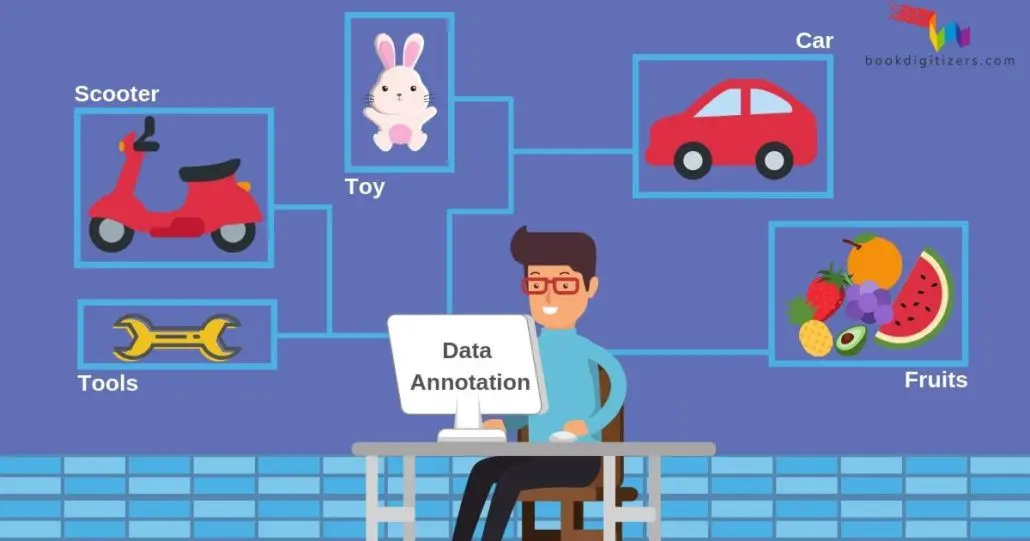How To Choose The Perfect Tool For Data Annotation

After gathering a sizable amount of raw data, you want to feed that data into artificial intelligence (AI) technologies so they can do tasks similar to those performed by humans. The problem is that you can only program these devices to function according to the settings you specify for a data set. Data annotation is a method for bridging the difference between data collected and AI/machine learning.
Managing a computer vision project involves transforming unprocessed data into knowledge that artificial intelligence (AI) technologies can use. A program and a human who can annotate data with the necessary skills are needed for the process of data labeling. To assist the AI learning system in interpreting and acting on the provided information, the annotator gathers raw data and generates labels, classifications, and other descriptive aspects. Though they can also be created from audio/visual components and images, the labeled collected information being used by machine learning and artificial intelligence is primarily made from alphabetic texts and numerical data.
Let’s first understand what is a data annotation tool and how is it helpful to you.
Table of Contents
- What is a data annotation tool?
- How can one select the best data annotation software?
- Why you should go for Labellerr?
What is a data annotation tool?
A software program that emphasizes training data for AI and machine learning is referred to as a data annotation tool. It can be containerized, on-premises, or based in the cloud. There are numerous open-source and shareware choices for data annotation.
Additionally, they are offered commercially for rent and purchase. Tools for data annotation are typically made for use with certain types of data, such as spreadsheets, photos, videos, text, audio, and sensor data. Additionally, they offer a variety of deployment options, including on-premises, container, SaaS (cloud), as well as Kubernetes.
Here is a list of some of the top image labeling software.

How can one select the best data annotation software?
Before you spend on any software, it is always recommended to look for certain features and factors that will help you in selecting the best product existing in the market.
The following factors must be taken into account while choosing the optimal data annotation tool-
Performance
A wide range of images is now available to deep-learning programmers. The manual nature of annotations means that photo tagging may take a lot of time and effort. Look for software that will accelerate manual annotation. Hotkey support, a user interface (UI) that is simple to use, and other features that reduce annotation time and improve annotation quality are a few examples.
Datasets administration
A key component of your workflow, handling the datasets you wish to annotate completely is where annotation begins and ends.
You must ensure that the program you are thinking about using can import and manage the vast amount of data and file types you might need to label.
You must confirm that the tool will meet the output requirements for your team because different tools maintain annotation output in varied ways. Due to where your data is stored, you must also double-check support-file storage locations.
The tool's ability to connect and share data is another aspect to take into account while building datasets management. With the need for quick access to the datasets and connectivity, processing of AI data and annotation in particular is sometimes handled by offshore companies.
The Functionality of the tool
Depending on the task at hand, labels may change. For instance, when classifying images, it is necessary to have a particular label that identifies the class for each image.
In computer vision, finding objects is a more challenging problem. Each object needs a class name and a set of dimensions to be adjusted in a bounding box that identifies its location within an image in terms of annotations. For semantic segmentation, a class name and pixel-level mask representing an item's contour are needed.
Therefore, you should have annotation software that has all the functionality you require, depending on the problem you're working on. In general, all computer vision tasks benefit from possessing a tool that can label images.
Formatting of Annotated data
There are numerous formats available for annotations, including Pascal VOC XMLs, TFRecords, COCO JSONs, photo masks, text files (CSV, txt), and more. Using a tool that can generate annotations in the desired format directly is a great method to speed up your data preparation process and save time, even though we can always convert annotations from one format to another.
Data quality assurance
The success of your artificial intelligence and machine learning models depends on the quality of the data. Additionally, tools for data annotation can help with validation and quality control (QC). You must ensure that the tool you are looking for includes quality control as a compulsory part of the data annotation procedure.
A quality dashboard will be a feature of many technologies, helping managers to identify and monitor quality issues. Additionally, many annotation software will have a function that returns QC responsibilities to the primary annotation team or even a separate QC team.
Pricing of the tool
The pricing of a tool is always a concern. It is seen that most programmers working in small/medium-sized teams look for free tools but free tools can never provide a list of benefits and your work will get stuck.
For a fair comparison, one should consider if paid options are worthwhile. You should examine the circumstances in which paying for a solution makes sense and adds value.
Why you should go for Labellerr?
Labellerr is a computer vision data pipeline automation tool that helps computer vision and ML teams to simplify the manual mechanisms involved in the AI-ML product lifecycle. We are highly skilled at providing training data for a variety of use cases with various domain authorities.
A variety of charts are available on Labellerr's platform for data analysis. The chart displays outliers if any labels are incorrect or to distinguish between advertisements.
We accurately extract the most relevant information possible from advertisements—more than 95% of the time—and present the data in an organized style. having the ability to validate organized data by looking over screens.
If you are looking for a data annotation tool, check out labellerr.

Simplify Your Data Annotation Workflow With Proven Strategies
.png)


